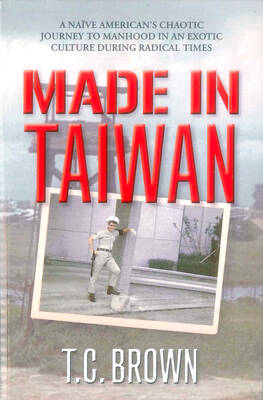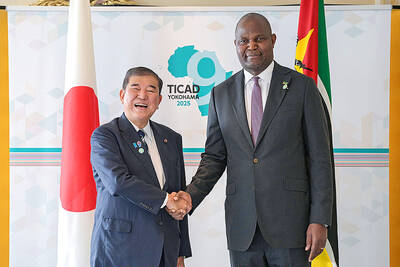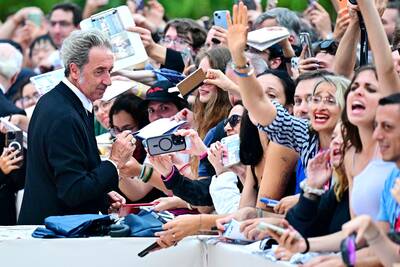In her humble first-floor apartment, Katherine Aull is searching for a killer that has stalked her family for generations.
But this is no manhunt. Aull is scouring her own genes in pursuit of a potentially lethal mutation that she may have inherited from her parents — and she has transformed her bedroom closet into a makeshift scientific laboratory to conduct the hunt.
The 23-year-old MIT graduate uses tools that fit neatly next to her shoe rack. There is a vintage thermal cycler she uses to alternately heat and cool snippets of DNA, a high-voltage power supply scored on eBay, and chemicals stored in the freezer in a box that had once held vegan “bacon” strips.
Aull is on a quirky journey of self-discovery for the genetics age, seeking the footprint of a disease that can be fatal but is easily treated if identified. But her quest also raises a broader question: If hobbyists working on computers in their garages can create companies such as Apple, could genetics follow suit?
“We have a long way to go,” Aull said. “But certainly in the short term, I’d like to show people how to do this, how to do it safely, and that you can do this.”
Aull, a former research associate at the now-defunct biotech company Codon Devices, doesn’t expect everyone to approach genetics with her same attitude. But with startup companies already gambling that knowing your genes could become as routine as a blood-pressure test, she figures, why not test the theory?
She has the attention of George Church, a Harvard Medical School genetics professor who was a pioneer of the Human Genome Project and a co-founder of Codon Devices, and who is now leading an effort to sequence the DNA of 100,000 people. Aull is one of his former students.
“Can genetics map onto electronics — is it ready to go into the garage shop in a hobbyist sense?” said Church. “That’s the question she’s asking, and I think that’s a very big, profound question ... There seems to be a very deep and growing curiosity about genetics that might dwarf electronics. No matter how much we love our gadgets, we’re totally fascinated by our ancestry and health.”
Aull’s quest began with her father, Ken Aull, who began to get sick a few years ago, when he was 58. His blood pressure spiked, and he had back pain and signs of liver problems.
The elder Aull, an engineer, went through a battery of tests, including a genetic test that revealed he had hemochromatosis, in which iron builds up in the body. He turned to his daughter, a biologist in training, for more insight.
Katherine Aull sifted through the data and saw that her father had mutations on each copy of one of his genes. Together, they gave him hemochromatosis, a potentially fatal disease with a simple treatment: have blood drawn regularly.
Today, with treatment, her father is fine, but she has been left wondering about herself. Each person inherits two copies of each gene: one from their mother and one from their father. Aull knows she must have inherited one mutant gene from her father. But it takes two mutant genes to cause hemochromatosis. The question is whether she inherited another from her mother.
Instead of going to a doctor to do the test, she recently prepared her samples by swabbing her cheek with a Q-tip and scraping the cells into a tube. Then, she dangled the tube in a pot of boiling water on her kitchen stove.
“For so many people, biology is something scary that takes place in a lab,” Aull said. “This shows people it’s understandable, and part of your life ... You can do it with basic kitchen equipment.”
To the tube, Aull added compounds that are specifically designed to isolate the fragments of DNA that could hold either normal genes or mutations. Then, she loaded the stovetop samples into her thermal cycler, a piece of lab equipment that noisily and rapidly ramps the temperature up and down, to create many copies of bits of DNA that could carry the mutation.
When her samples were ready, Aull loaded them into a gel in a plastic box and hooked it up to a high-voltage power supply. The DNA moved across the gel. Later, in the glow of an intense blue light, she watched bands of DNA light up, revealing which mutations lie within her genes.
So far, Aull’s initial experiment indicates that she carries two mutant genes. She is repeating the experiment to check her results and eventually plans to get a professional test.
Beyond getting the experiment to work, the big questions hanging over home biology experiments right now include safety and determining how such amateur efforts will coexist with professional science, said Mackenzie Cowell, who is working to foster a biology community called DIYbio — for do-it-yourself biology — in Boston.
Keith Robison, a computational biologist who worked at Codon Devices, urges caution to amateurs who may not understand the nuances of their self-experiments without the assistance of genetic counselors.
He took an example from his own life to describe the undue anxiety that can come from pursuing one’s own genetic information. When he found out that someone in his wife’s family was color-blind, he became “semi-obsessed” with calculating the probability his son might also be color-blind. Unlike color-blindness, many diseases are caused by a mix of factors, only one of which is genetics. So what kind of confusion could occur, Robison wonders, if people begin sifting through their genome and find a gene that “raises the risk [for a disease] in some complicated way we don’t know how to understand?”
Even when scientists have pinpointed the genetic mutations that cause a disease, as they have done with hemochromatosis, some people who carry both mutant genes may develop no symptoms of the disease.
Patients should not take action without medical advice, said Cheryl Garrison, executive director of the Iron Disorders Institute, a nonprofit group that raises awareness about hemochromatosis.
“It’s imperative they maintain a relationship with their doctor,” Garrison said. “Before you take action on the results, make sure you get a medical partner.”

During the Metal Ages, prior to the arrival of the Dutch and Chinese, a great shift took place in indigenous material culture. Glass and agate beads, introduced after 400BC, completely replaced Taiwanese nephrite (jade) as the ornamental materials of choice, anthropologist Liu Jiun-Yu (劉俊昱) of the University of Washington wrote in a 2023 article. He added of the island’s modern indigenous peoples: “They are the descendants of prehistoric Formosans but have no nephrite-using cultures.” Moderns squint at that dynamic era of trade and cultural change through the mutually supporting lenses of later settler-colonialism and imperial power, which treated the indigenous as

By 1971, heroin and opium use among US troops fighting in Vietnam had reached epidemic proportions, with 42 percent of American servicemen saying they’d tried opioids at least once and around 20 percent claiming some level of addiction, according to the US Department of Defense. Though heroin use by US troops has been little discussed in the context of Taiwan, these and other drugs — produced in part by rogue Chinese Nationalist Party (KMT) armies then in Thailand and Myanmar — also spread to US military bases on the island, where soldiers were often stoned or high. American military policeman

An attempt to promote friendship between Japan and countries in Africa has transformed into a xenophobic row about migration after inaccurate media reports suggested the scheme would lead to a “flood of immigrants.” The controversy erupted after the Japan International Cooperation Agency, or JICA, said this month it had designated four Japanese cities as “Africa hometowns” for partner countries in Africa: Mozambique, Nigeria, Ghana and Tanzania. The program, announced at the end of an international conference on African development in Yokohama, will involve personnel exchanges and events to foster closer ties between the four regional Japanese cities — Imabari, Kisarazu, Sanjo and

The Venice Film Festival kicked off with the world premiere of Paolo Sorrentino’s La Grazia Wednesday night on the Lido. The opening ceremony of the festival also saw Francis Ford Coppola presenting filmmaker Werner Herzog with a lifetime achievement prize. The 82nd edition of the glamorous international film festival is playing host to many Hollywood stars, including George Clooney, Julia Roberts and Dwayne Johnson, and famed auteurs, from Guillermo del Toro to Kathryn Bigelow, who all have films debuting over the next 10 days. The conflict in Gaza has also already been an everpresent topic both outside the festival’s walls, where